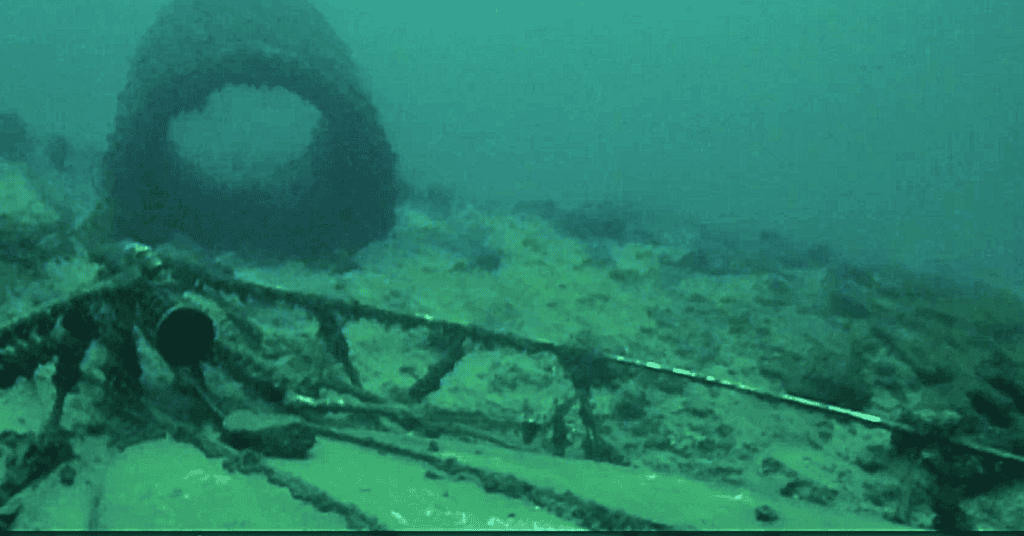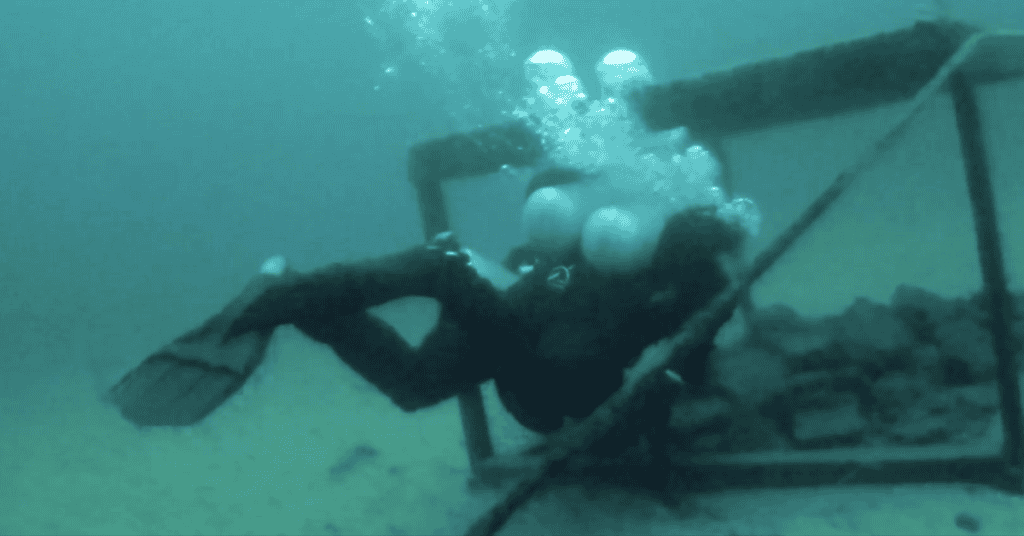Humber Bay, situated off Lake Shore Boulevard West in Toronto, is an indispensable training ground for scuba divers in the Greater Toronto Area. Known for its accessibility, the site allows divers to practice skills and explore underwater with easy access to an open-water environment, making it an essential spot for both novice and experienced divers.
Dive Site Configuration,
The primary feature of Humber Bay West is its organized training area, which is clearly marked with four plastic jugs that delineate a square training zone. This zone contains shallow platforms at depths ranging from 15 to 20 feet, ideal for beginner training sessions. There are of these platforms at Humber bay, the platforms are connected by underwater lines that guide divers around the area, helping them to navigate safely and effectively under various visibility conditions.
There is a great community of divers that help make Humber Bay West a usable dive site, and they have created an incredible map of Humber Bay. I do not take any credit for this map; I am not sure who to give credit to, but when I do, I’ll post credit here. Click the link here to see the Map.
Humber Bay West also has a pretty active dive community. If you would like to connect with some local divers, this is a good place Facebook Toronto Scuba Divers.
Navigational Routes and Additional Features
Beyond the basic training area, Humber Bay West offers extended routes for more advanced divers to explore. These include additional platforms and lines that stretch around the peninsula, providing opportunities for more seasoned divers to test their navigation skills. Lines connect each parking lot, allowing you to plan different dives each time you visit Humber Bay to scuba dive. One notable feature is a line adorned with superhero mannequins, adding a quirky element to the dive experience, it is fun to visit Humber Bay as each time you visit, there may be a new addition to the line. A new red line has been installed, extending nearly 60 feet deep, aimed at divers seeking deeper water experiences.
Entry and Exit Challenges
Access to the water at Humber Bay can be fairly easy as all the entry sites are from a loose sand and pebble beach. Snow and ice can make it more difficult in the winter season. One path to the water divers must navigate between two trees leading to a beach this is the entry most used by divers when this one is busy. Usually, divers will move to one of the other entries. Surface water conditions can vary dramatically with the weather, affecting both entry and exit from the dive. At times, the waves may be too rough, leading to cancellations of planned dives.

Having multiple entries and platform locations allows local divers to be flexible with their dive plans as often. Depending on the direction the wind is blowing, it may be wavey and difficult to enter the water on one side of a peninsula, but it provides calm, sheltered areas on the other side, allowing safe entry and exit for your dive. Don’t be quick to call a dive at Humber Bay due to entry conditions till you scope out all the entries.

Visibility and Water Conditions
Visibility in Humber Bay can greatly affect the diving experience. On rare occasions, visibility can extend up to 80 feet, but more commonly, it hovers between 15 and 25 feet. During poor conditions, visibility can drop to as low as 5-10 feet, providing a critical training component that forces divers to focus closely on buddy communication and line-following techniques. The best visibility is often when there hasn’t been any rain for a few days (humber river pours into Humber Bay, causing runoff), and if there is a wind blowing in the southeast or west direction, it will normally provide some of the best visibility as it will often blow out any river debris or algae that affect visibility at Humber Bay.
Temperature and Dive Duration
Water temperatures in Humber Bay can vary significantly, often dictating the type of gear divers choose. For instance, temperatures have been recorded as low as 5℃or 42°F, possibly necessitating the use of dry suits. Typical dive times can range from 20 minutes for a quick session to 50 minutes for more extensive exploration, depending on visibility, temperature, and diver interest.
Diver Experiences and Skill Practice
Many local divers use Humber Bay to hone their diving skills, preparing for more challenging dives in other parts of the world. The site offers the chance to practice advanced diving techniques like buoyancy control, various finning methods, and the use of surface marker buoys. The presence of a small sunken boat provides an excellent reference point for practicing these skills in a realistic setting.
I personally have used this location for preparation for my Into into technical diving and caver diver training with Dan’s Dive Shop.
Skill Development Opportunities
Humber Bay is not just a training ground for basic diving skills. It also serves as a venue for practicing technical diving skills required for cave and wreck diving, which demand precise buoyancy control, reel handling, and team diving procedures. These practices are essential for those looking to advance to higher levels of scuba certification.

This is possible as a few sunken culverts provide a short swim-through with debris stuck to it, so only the absolute most precise finning techniques allow one to swim through without disturbing the debris and reducing the visibility. Also, all of Humber Bay has a silt bottom that will be very unforgiving if your finning techniques aren’t precise, providing valuable feedback on whether you need to improve. Also the platform provides great visual points in the water to practice buoyancy simulating deco stops. If you swim under them again, provide another opportunity for you to get feedback on how precise your finning and buoyancy techniques are. The Visibility condition being so variable is great for divers looking to hone cave diving techniques as it is an opportunity to deploy a reel and set some line down to create a simulated low visibility cave dive, knowing that you’re actually in a fairly safe, controlled bay with access to the surface any time you need.

Continued Importance of Local Diving
Despite its simplicity and the occasional mundanity due to limited visibility and features, Humber Bay remains a crucial part of the local diving community’s routine. Regular dives at the site allow divers to maintain and refine their skills, ensuring preparedness for more adventurous dives elsewhere.
If you are looking for other local shore dives, check out this article on 16 shore dives todo in southern Ontario
Evolving Dive Site
Humber Bay West continues to evolve, with ongoing additions and improvements to the dive routes and features. These changes enhance the overall diving experience, providing both novice and experienced divers with new challenges and reasons to keep returning to the site. It also reinforces how lucky we are to have such an active dive community in the GTA (Greater Toronto Area), as it’s not uncommon for there to be multiple parking lots full of divers here just to get a dive in.
Humber Bay stands as a testament to the vibrant diving community in Toronto. It provides a space where divers can safely learn and practice essential skills. Its role as an underwater classroom makes it an invaluable resource for the local scuba diving community, ensuring that divers are well-prepared for whatever underwater adventures lie ahead.

